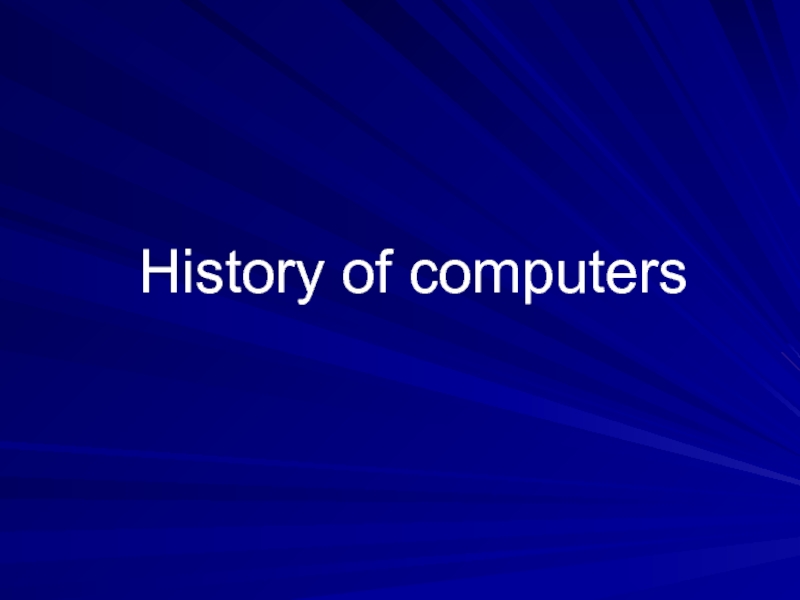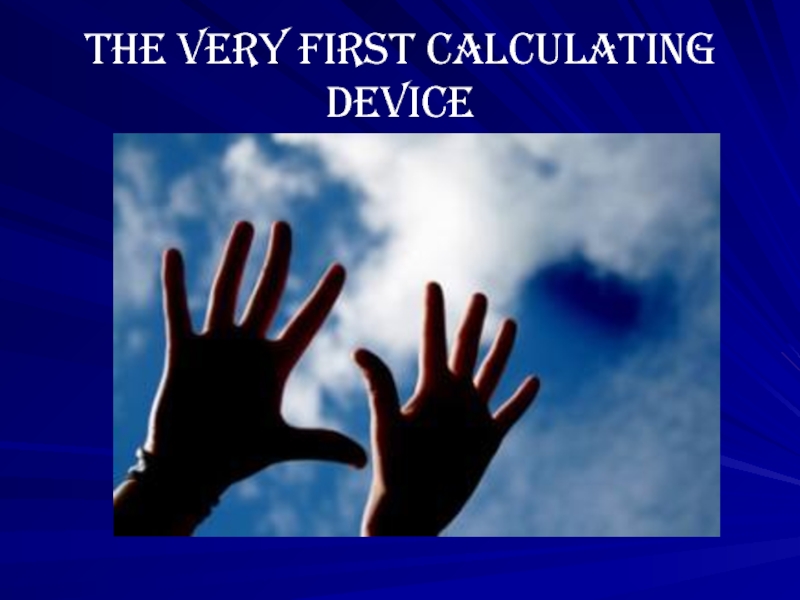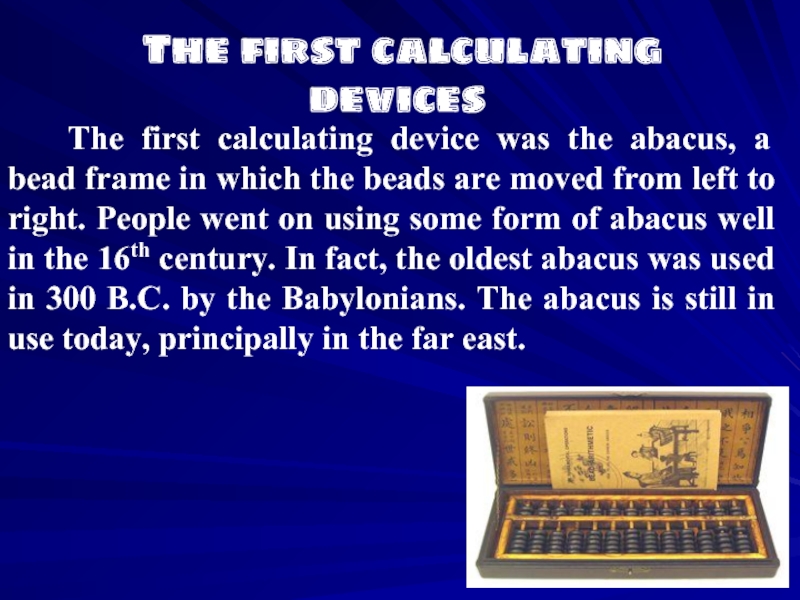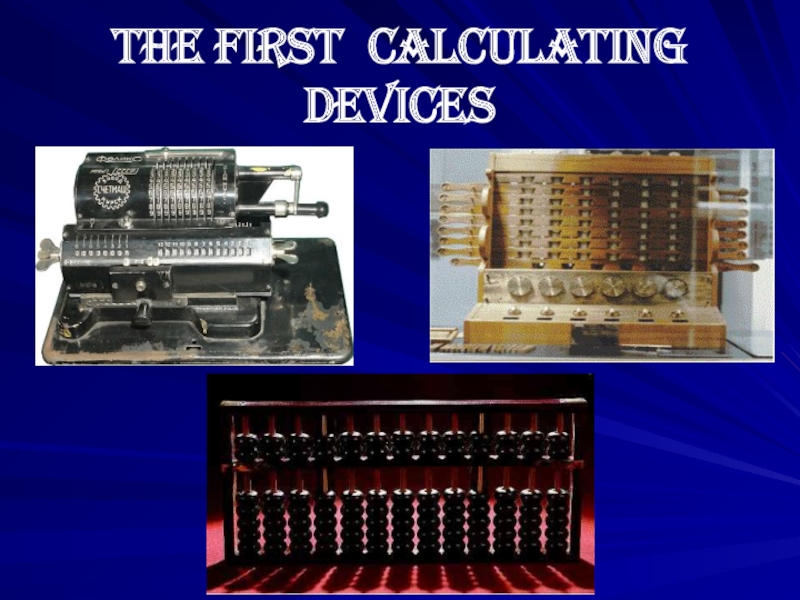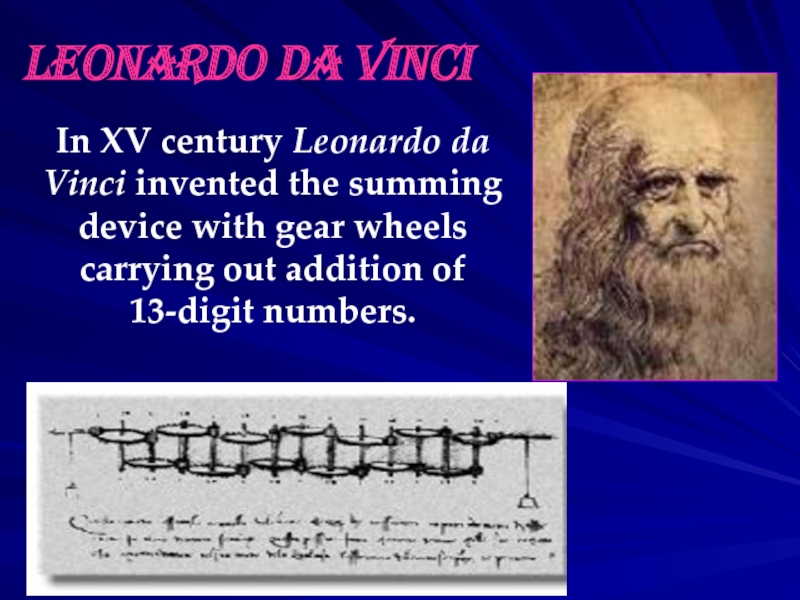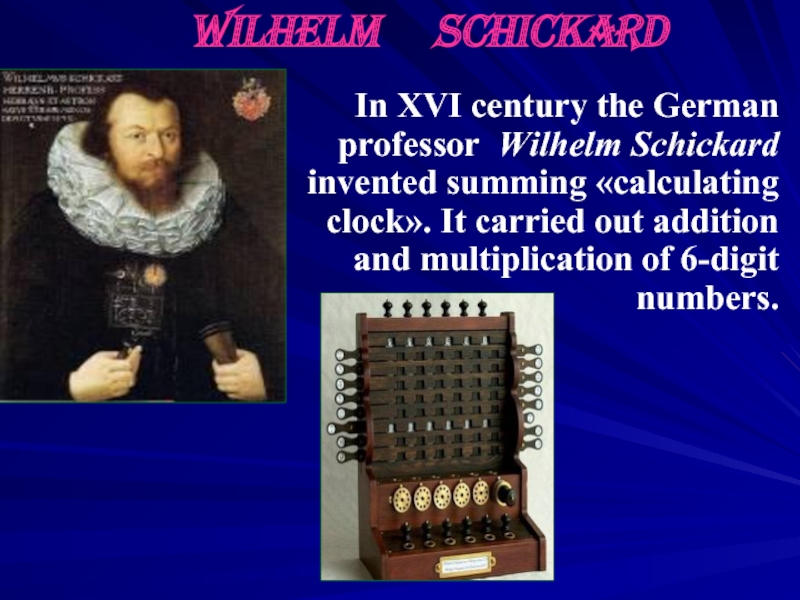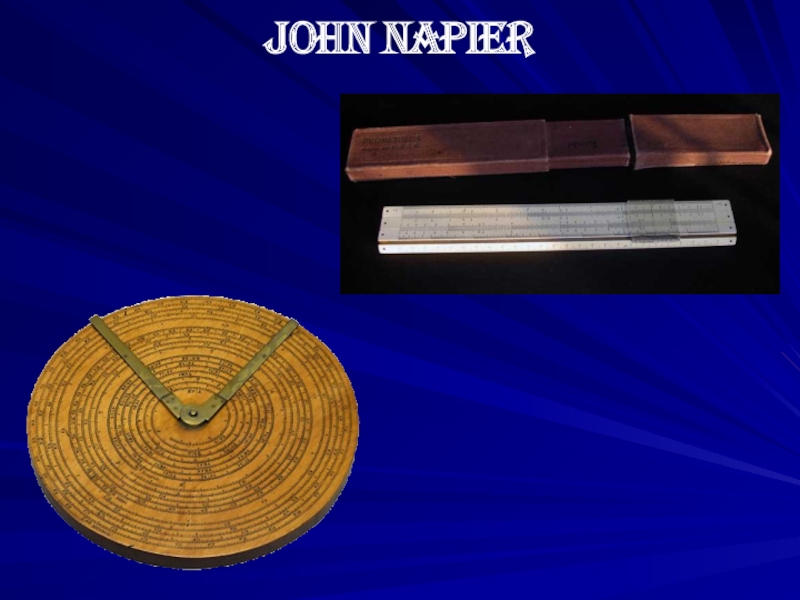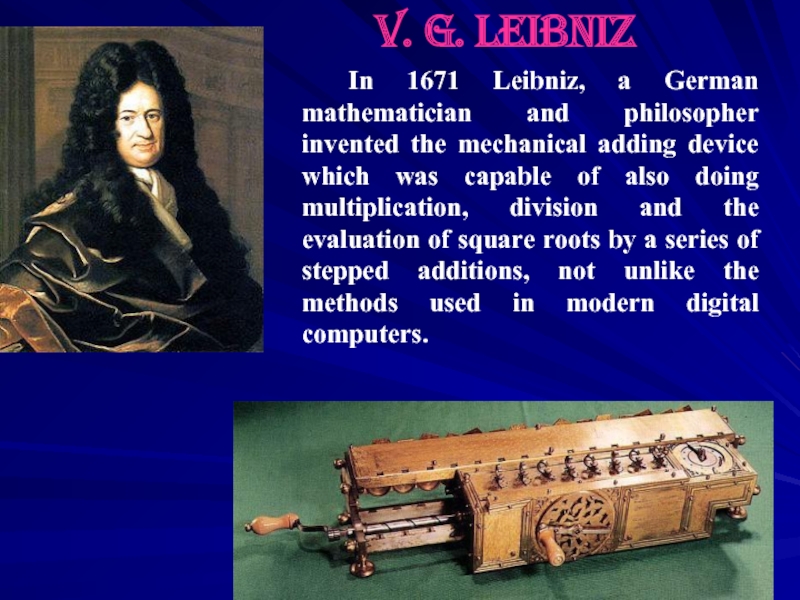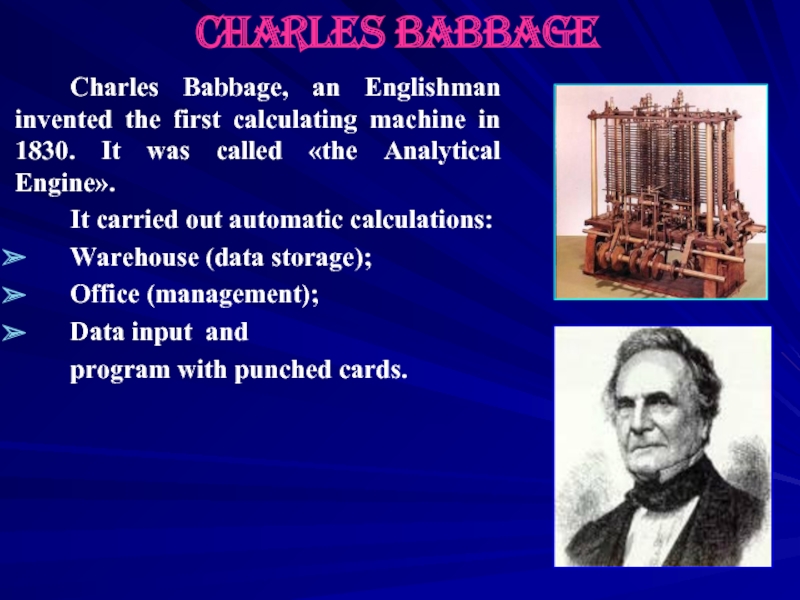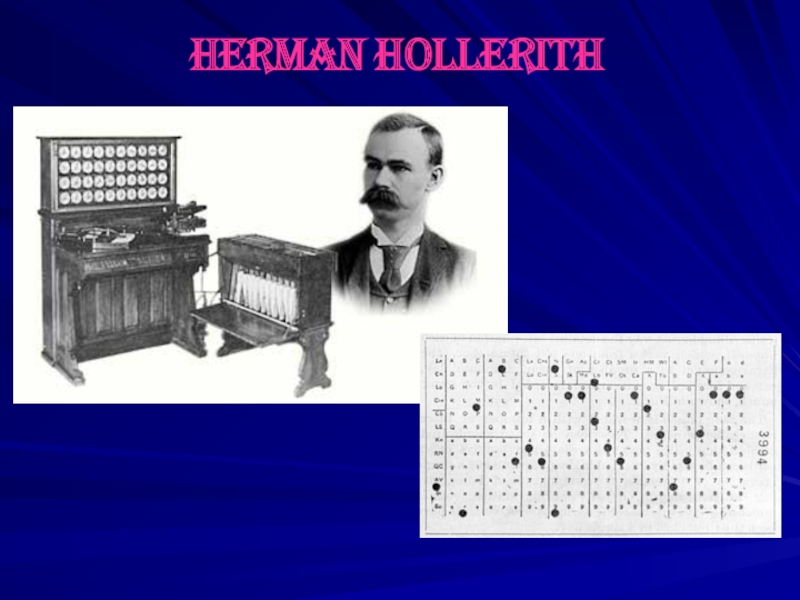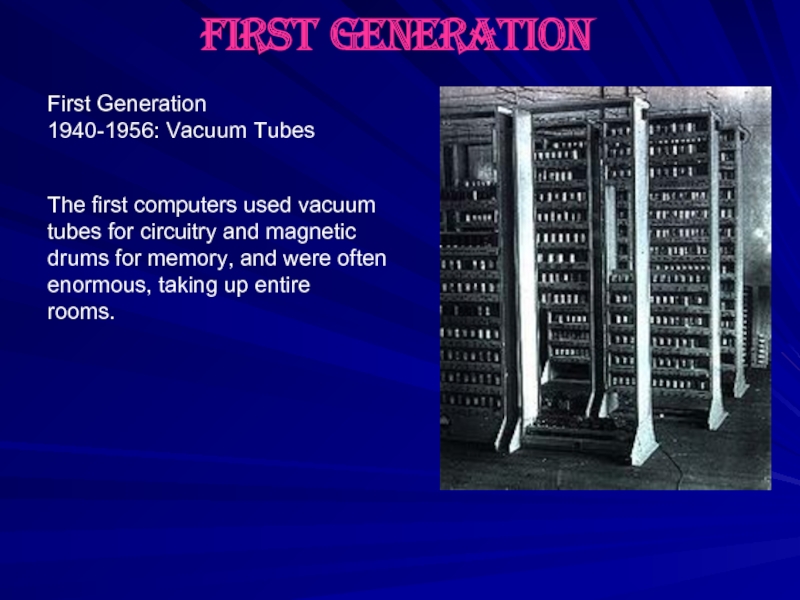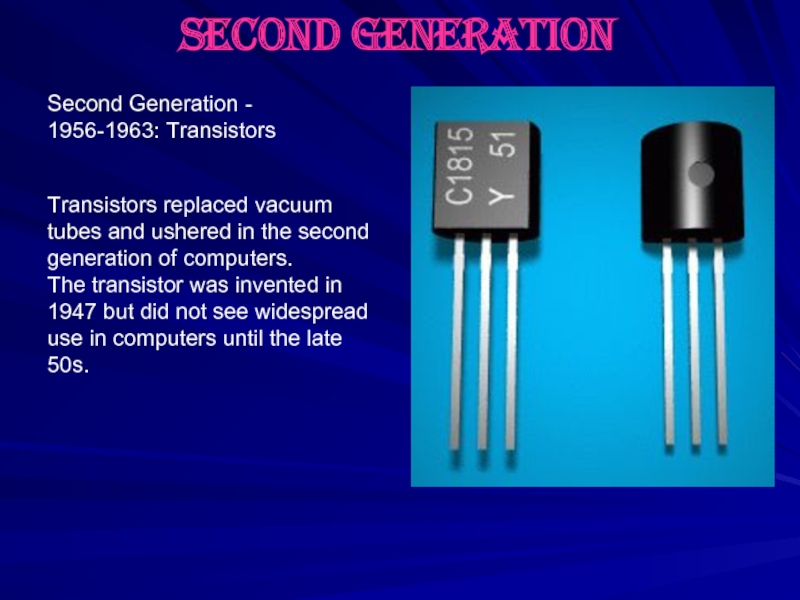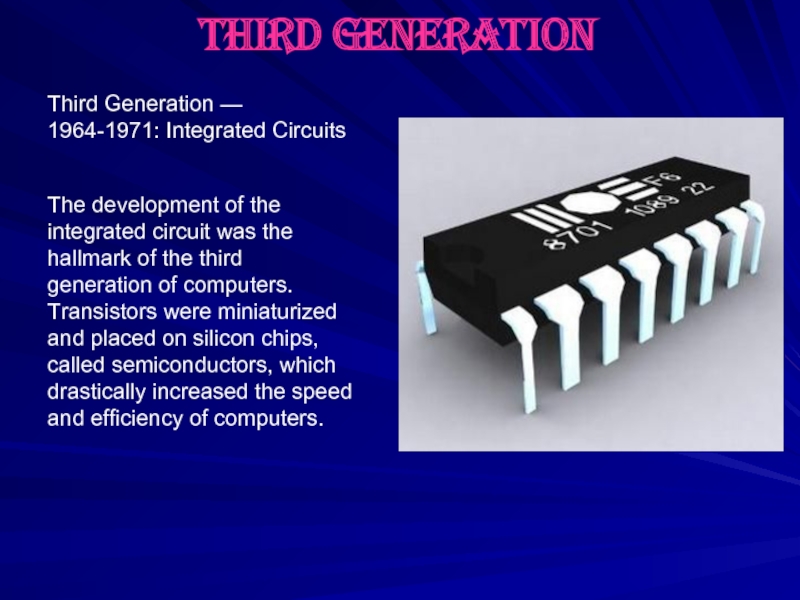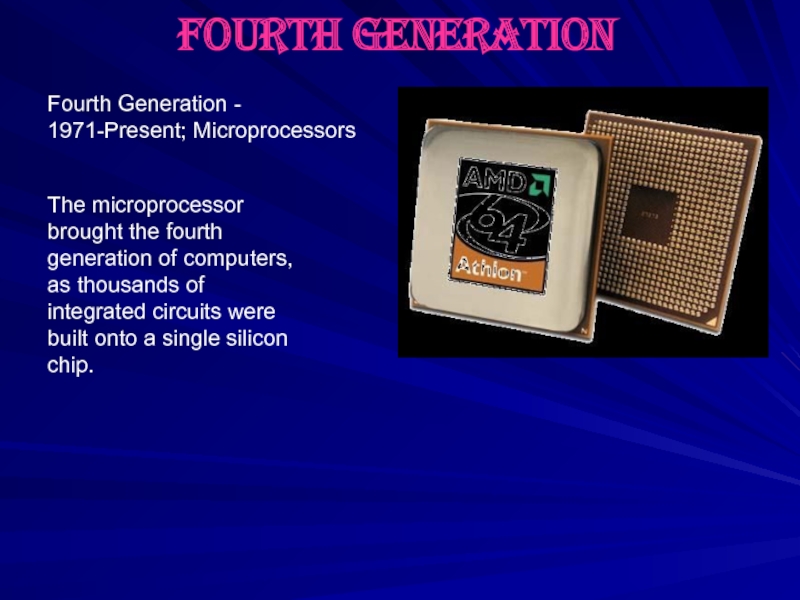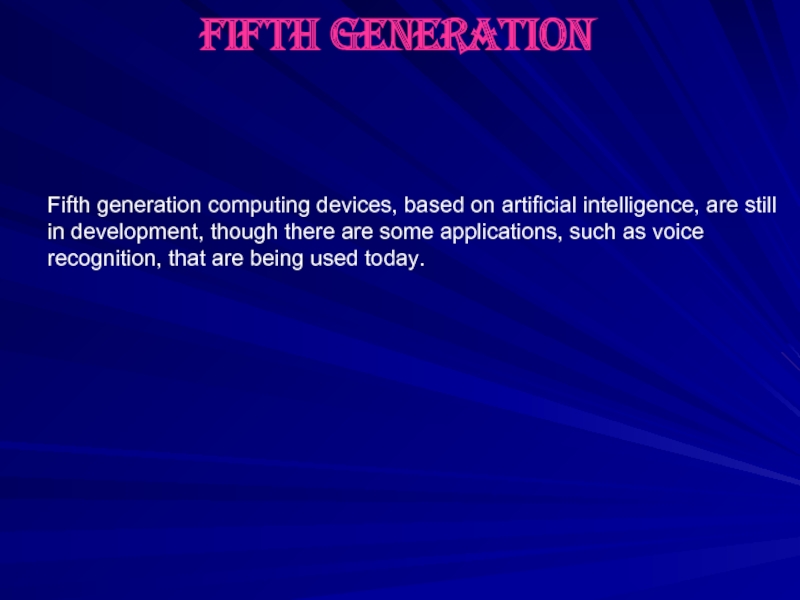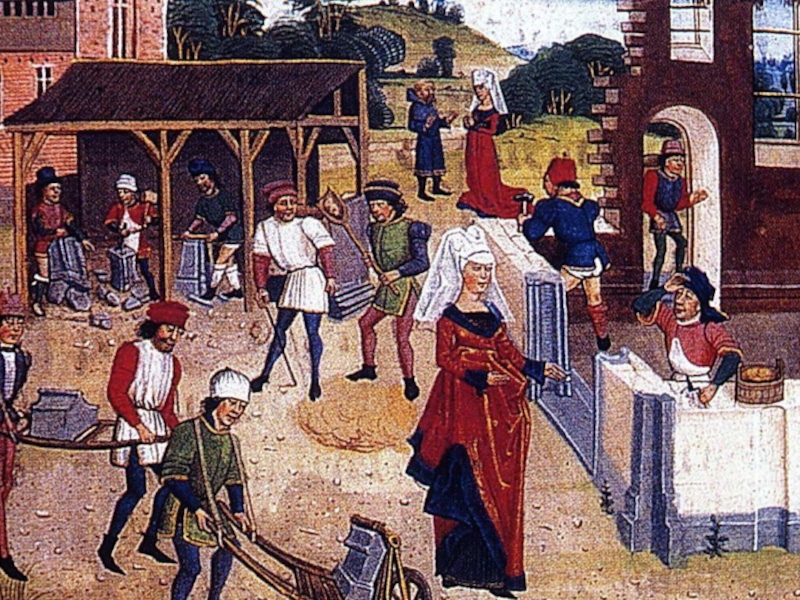- Главная
- Разное
- Дизайн
- Бизнес и предпринимательство
- Аналитика
- Образование
- Развлечения
- Красота и здоровье
- Финансы
- Государство
- Путешествия
- Спорт
- Недвижимость
- Армия
- Графика
- Культурология
- Еда и кулинария
- Лингвистика
- Английский язык
- Астрономия
- Алгебра
- Биология
- География
- Детские презентации
- Информатика
- История
- Литература
- Маркетинг
- Математика
- Медицина
- Менеджмент
- Музыка
- МХК
- Немецкий язык
- ОБЖ
- Обществознание
- Окружающий мир
- Педагогика
- Русский язык
- Технология
- Физика
- Философия
- Химия
- Шаблоны, картинки для презентаций
- Экология
- Экономика
- Юриспруденция
History of computers презентация
Содержание
- 1. History of computers
- 2. The very first calculating device
- 3. The first calculating devices The
- 4. The first calculating devices
- 5. Leonardo da Vinci In XV century Leonardo
- 6. In XVI century the German
- 7. John Napier
- 8. In 1671 Leibniz, a German mathematician and
- 9. Charles Babbage, an Englishman invented the first
- 10. Herman Hollerith
- 11. first generation The first computers used vacuum
- 12. second generation Transistors replaced vacuum tubes and
- 13. third generation The development of the integrated
- 14. Fourth generation The microprocessor brought the fourth
- 15. fifth generation Fifth generation computing devices, based
Слайд 3 The first calculating devices
The first calculating device was the
Слайд 5Leonardo da Vinci
In XV century Leonardo da Vinci invented the summing
Слайд 6 In XVI century the German professor Wilhelm Schickard invented
Wilhelm Schickard
Слайд 8In 1671 Leibniz, a German mathematician and philosopher invented the mechanical
V. G. Leibniz
Слайд 9Charles Babbage, an Englishman invented the first calculating machine in 1830.
It carried out automatic calculations:
Warehouse (data storage);
Office (management);
Data input and
program with punched cards.
Charles Babbage
Слайд 11first generation
The first computers used vacuum tubes for circuitry and magnetic
rooms.
First Generation
1940-1956: Vacuum Tubes
Слайд 12second generation
Transistors replaced vacuum tubes and ushered in the second
generation of
The transistor was invented in 1947 but did not see widespread use in computers until the late 50s.
Second Generation -
1956-1963: Transistors
Слайд 13third generation
The development of the
integrated circuit was the
hallmark of the third
generation
Transistors were miniaturized
and placed on silicon chips,
called semiconductors, which
drastically increased the speed
and efficiency of computers.
Third Generation —
1964-1971: Integrated Circuits
Слайд 14Fourth generation
The microprocessor
brought the fourth
generation of computers,
as thousands of
integrated circuits were
built onto a single silicon
chip.
Fourth Generation -
1971-Present; Microprocessors
